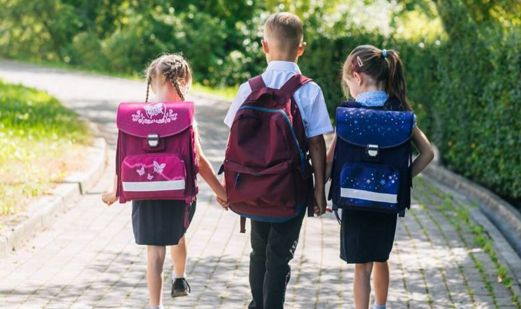By Lindy Nolan
 Journalists like the ABC’s Dr Norman Swan deserve respect. His unparalleled 40-year connections with health workers and scientists have made him a standout in Australia’s strong response to Covid-19.
Journalists like the ABC’s Dr Norman Swan deserve respect. His unparalleled 40-year connections with health workers and scientists have made him a standout in Australia’s strong response to Covid-19.
He warned that Chief Medical Officers were political appointees. He gave urgent voice to experts demanding physical distancing and medical workers facing acute shortages.
Those unstoppable voices informed everyday people. In neighbourhoods, families and workplaces, people were shaken out of old routines.
Take construction workers. In strongly unionised workplaces extra cleaners did all day shifts, breaks were staggered, hoists could only take one person at a time, there was sanitiser galore.
The contrast to schools couldn’t have been starker. Swan said schools should be closed.
Deep knowledge versus deep reporting
By April 2, key areas of concern during the lockdown were exposed by Spirit of Eureka. Difficulties like lack of home internet or computers, support for students with various disabilities, or where English is not spoken at home, or rural and remote, or First Peoples who in some cases lacked even food in lockdown, provision of counselling services, need for casual teachers, the lack of specialist consultants from teacher ranks, huge logistical and IT problems in online education provision – these issues overwhelmingly impact the public system.
In contrast, mainstream education reporting glibly reduced the union’s specialist knowledge of over 70 per cent of the state’s students to two paragraphs at most. It took nearly a month before the concerns we raised, coming collectively from the chalkface and union, to surface widely.
Information appeared piecemeal from journalists and online newspapers who lacked the necessary connections or deep knowledge to understand the system. Media funds do not stretch to specialist education reporters.
Too often they rely on “experts” like Blaise Joseph from the Gina Rinehart-funded Centre for Independent Studies, who pushed urgency on getting public schools open.
Or they publish articles as “colour”. A deputy from Wilcannia Central School showed the rich hands-on packages hand-delivered to students. Inspiring stuff. But her comments on a “seamless” move to online learning in Sydney?
“Our IT department has been fabulous!” a friend at an elitist Sydney school told me. “Our kids don’t have internet or computers at home,” I replied.
Twitter publicity for ABC’s April 27 Q&A on education showed union speakers were excluded. “Where’s the Teachers Federation?” was the first online comment. The message must have got through, because Federation President Angelo Gavrielatos appeared to answer several questions by video link. The night before, funding-starved ABC television news on education sounded like a government press release.
Strengths and limitations
The Teachers Federation’s democratic structures regularly bring large numbers of elected representatives together from across the state.[i] No other organisation has such deep and diverse understanding of school education in NSW.
Yet the NSW Government ignored its advice – based on sound educational evidence and practice – that the eventual return to school be staggered, and its suggestion Year 12 and Kindergarten return first.
Instead the government announced public schools would re-open with all students attending one day per week from May 11, while online provision continued.
This impossible proposal – imposed only on state schools – has nothing to do with education. The collective strength of teachers ensured a strong intervention by Federation President Angelo Gavrielatos on Nine’s Today Show.
Q&A gave prominence to NSW Education Department Secretary, Mark Scott. He has never worked or studied in a state school. He’s a media professional and it showed. His professed concern about students will rile teachers.
He helped devise a 1988 plan (fronted by notorious NSW Education Minister Terry Metherell) to dismember and defund the state education system. It brought over 80,000 education workers, students and community members onto the streets.
The unprecedented response saw tactics shift. Successive administrations, Coalition and Labor, implemented that plan piece by piece, so the system is now held together by the unstinting efforts of department employees and contract workers.
Unlike previous presidents who all have recent experience as teachers, Gavrielatos, is a very recent returnee from Education International, where he worked unceasingly against corporations reaping gargantuan profits from the “education industry”. On Q&A and clearly stressed, he did not explain the pressing reasons why one day a week for all students is educationally unsound. He challenged neither Scott’s recent statement that social distancing would not apply to schools nor basing the health decision on a tiny sample in NSW schools. Tweeting teachers and students took up the slack. Federation is the sum of its parts, not just a central leadership.
But the union’s strength has always had limits. It must win concessions within a corrupt system where corporate profit is god. In recent years, it bowed to laws against industrial action. Rather than prioritising members’ collective strength, it campaigned for Labor governments to fix things. TAFE has been gutted, and Corrective Services education privatised, all without a state wide strike for over seven years.
Despite huge and active rank and file support for the union’s struggle to provide safer workplaces in Covid conditions, this gives ammunition to those attacking the union from the far right.
On the union’s Facebook page, a teacher expressed anger about the government’s plan. Then a U.S. based troll, parading as teacher, blamed Federation for selling out. The tone immediately shifted, including another “teacher” trolling, “When were they last in the classroom?”
Well, in my seven years on the union’s Executive, like other Executive members, I also taught full time.
Organised trolling knows no borders. Its pro-U.S. corporate agenda dovetails with the raft of anti-union laws.
No social distancing
Now schools are to be more widely reopened and health departments assure us that kids “aren’t contagious”.
According to the Queensland Health Department, “Almost all the reported infections in children have been traced to an adult in the same household. This suggests that children have been infected by close prolonged contact with adults and not by contact with other children.” Yet apart from contact with overseas travellers, immediate family is also the source of most known infections in adults outside nursing homes. Besides, children have been isolated from each other and cases of ordinary influenza have been rare.
Overall, children are asymptomatic or have very mild symptoms. But numerous studies have shown that asymptomatic people are still contagious.
On April 1, the BBC’s Michelle Fernandes begins an article with “A recent tweet by entrepreneur Elon Musk suggesting children are ‘essentially immune’ to the coronavirus.”
The widely referenced article is tellingly titled, Why children are not immune to Covid-19.
In late April, Professor Raina MacIntyre, head of the Biosecurity Program at University of NSW Kirby Institute, raises the same concern.
According to Dr Petra Zimmermann and Dr Nigel Curtis in The Pediatric Infectious Disease Journal, “A study prepublished in early March 2020 suggests that children are just as likely as adults to become infected with SARS-CoV-2 but are less likely to be symptomatic or develop severe symptoms. However, the importance of children in transmitting the virus remains uncertain.”
Dr Swan has been subjected to numerous media attacks because he helped inform and empower Australians against a very different corporate agenda. He now supports the opening of schools. The day after his announcement, yet another report of children becoming ill, probably with the virus, emerged from the UK.
The day after, the NSW premier announced a $20 million advance to “assist” private schools to reopen. Enough said.
Tens of thousands of education workers organised in unions are harder to convince that a chaotic return without social distancing is acceptable. They know the conditions they face in schools. They have more power than they think. As schools re-open, they need unity.
[i] NSW Teachers Federation members, organised in local associations, directly elect representatives to its 600-strong annual conference and 400-member state council, with eleven full days of meetings each year outside school hours. These set policy, and elect organisers and the Federation Executive. When contested, elections for the three Senior Officers are decided by all members every three years. The process is two way, from the members to the leaders and back again.



